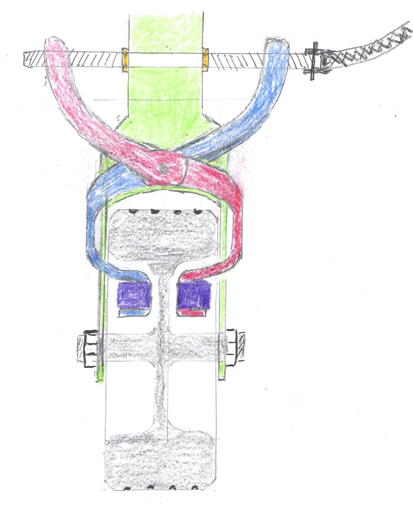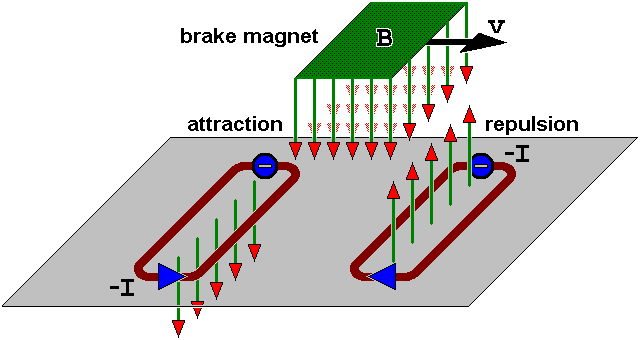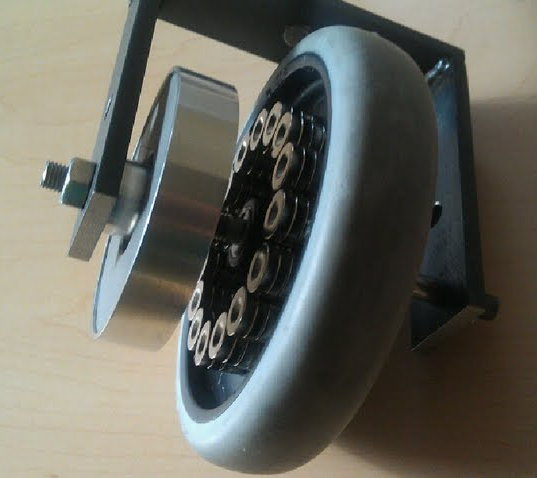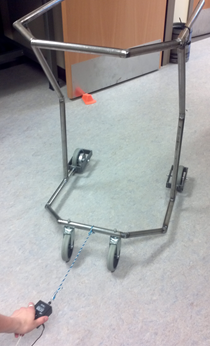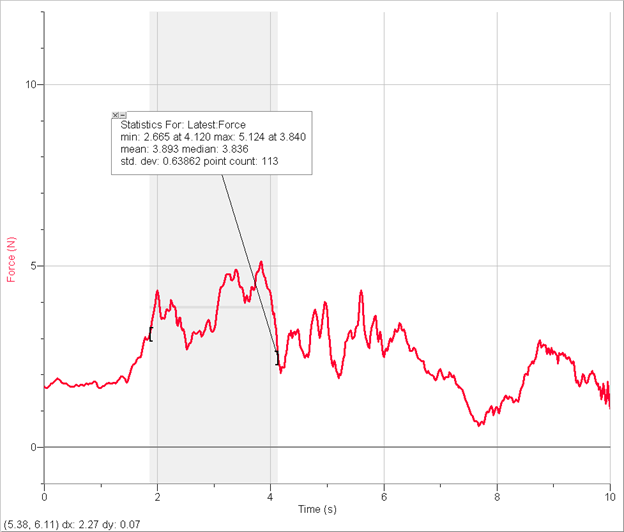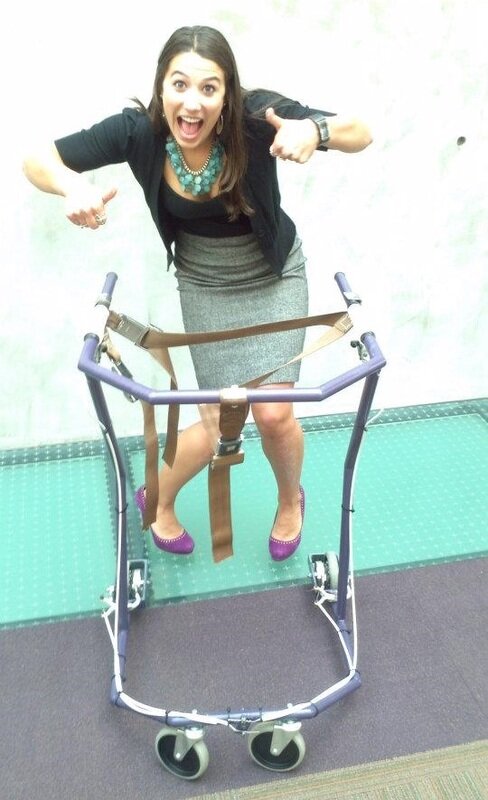
Assistive medical walker for Parkinson’s patients.
Project Length: 8 months
Focus Areas: Assistive Device Design, Mechanism Design, Structural Analysis, Design of Experiments
Materials: Aluminum Tubing, Nylon Harnessing, Neodymium Magnets, Urethane Wheels, Caliper Braking Assembly
This product was built for my senior capstone project at the University of Portland. The class spanned a full year, with the first semester spent largely on design and exploration, and the second used to build and test.
As part of a team of four, I helped to design, manufacture, and test a walker with the specific purpose of assisting people afflicted by Parkinson's Disease. Features of the finished product included:
Robust aluminum frame
Safety harness
Reverse braking (squeezing brake levers releases brakes)
Adjustable magnetic wheel resistance
Having adjustable wheel resistance was perhaps the walker's most technical function and required the most amount of planning and experimentation. Those with Parkinson's often experience "freezing gait", during which they become unable to move mid-step and are at risk for losing balance. Adjustable magnets on the wheel fixture allow the user to vary the max speed of the walker to align with their own comfort levels.

